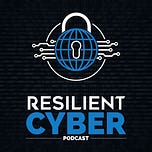In this episode we sit down with Chloe Messdaghi, Head of Threat Intelligence at HiddenLayer, an AI Security startup focused on securing the quickly evolving AI security landscape. HiddenLayer was the 2023 RSAC Innovation Sandbox Winner and offers a robust platform including AI Security, Detection & Response and Model Scanning.
Interested in sponsoring an issue of Resilient Cyber?
This includes reaching over 6,000 subscribers, ranging from Developers, Engineers, Architects, CISO’s/Security Leaders and Business Executives
Reach out below!
- For folks now familiar with you or the HiddenLayer team, can you tell us a bit about your background, as well as that of HiddenLayer?
- When you look at the AI landscape, and discussions around securing AI, what is the current state of things as it stands now? I would recommend checking out the "AI Threat Landscape Report" you all recently published.
- Many organizations of course are in their infancy in terms of AI adoption and security. I know the HiddenLayer team has really been advocating concepts such as AI Governance. Can you talk about how organizations can get started on this foundational activity?
- HiddenLayer published a great two part series on an "AI Step-by-Step Guide for CISO's", can you talk about some of those recommendations a bit?
- You all also have been evangelizing practices such as Red Teaming for AI and AI Models. What exactly is AI Red Teaming and why is it so critical to do?
- Another interesting topic is how we're beginning to look to Govern AI, both here in the U.S. with things such as the AI EO, and in the EU with the EU AI Act. What are some key takeaways from those, and what do you think about the differences in approaches we're seeing so far?












Resilient Cyber w/ Chloe Messdaghi - AI Security & the Threat Landscape